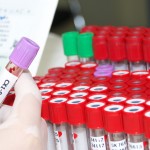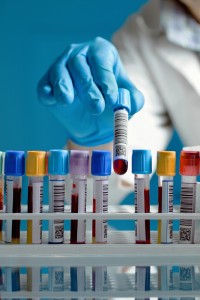
 “A ‘right first time’ approach is encouraged and endorsed by commissioners, clinical teams and users to ensure safety and efficiency.”
“A ‘right first time’ approach is encouraged and endorsed by commissioners, clinical teams and users to ensure safety and efficiency.”
NHS Improvement has been working closely with the Department of Health and a range of healthcare organisations, testing and implementing improvements with over 250 sites across the country and providing an improvement tool to over 2,000 GP practices. They have published this report to demonstrate how blood sciences teams have been working to improve services for their users.
Four out of the five domains highlighted in the NHS Operating Framework 2012/13, are relevant to blood sciences. Blood testing can be used to screen for major conditions, thereby reducing premature mortality; they improve the quality of life for patients with long-term conditions, such as diabetes; by providing timely results for emergency admissions, they can improve the recovery rates of patients; and finally all NHS organisations, including blood sciences are obliged to respond positively to patient feedback.
The vision for the NHS pathology services puts patients first by providing clinically excellent, responsive, cost effective and integrated services. There are 250 NHS laboratories in England, and the way they deliver their services can impact on the patient experience and positive outcomes. The speed by which accurate blood test results are delivered to health professionals, needs to be efficient so that reliable treatment decisions can be made and implemented quickly.
NHS Improvement has been working with the Department of Health Pathology Programme, supporting a number of blood sciences teams by exploring how Lean methodology can be applied to support the QIPP agenda. This report discusses the lessons learned and the improvements they made in the following areas:
- error reduction by working with service users;
- flow of samples and turnaround times;
- use of technology to support clinical decision making;
- education of users so that the most appropriate tests are correctly requested;
- efficient allocation of staff skills;
- analysis and removal of waste from the processes involved.
As part of this work, they learned three important lessons. They found that there was a lack of consistent approach to measurement of the blood science specimen pathway, and therefore changes would need to be made to support future measurement. They also found that future education of users should be face-to-face so that there is the opportunity for questions and ensuring that everyone understands what is required of them. It also provides the opportunity for clinicians and laboratory technicians to work together to improve the design of services.
Some of the outcomes that have resulted as a consequence of this work, include new key performance indicators (KPIs) published by the Royal College of Pathology, which specify that key measures should include the dates and times that the specimen is taken, arrives in the lab, and the result is available to the clinician.
Report recommendations
 Overall, using Lean methodology described in the report, they found that there are five key activities that will improve blood science services significantly:
Overall, using Lean methodology described in the report, they found that there are five key activities that will improve blood science services significantly:
- Focus on the whole end to end pathway, rather than specific areas, because by looking at the whole process, it is easier to understand where the problems lie.
- Don’t keep patients waiting because the batch sizes are too big; use smaller batch sizes.
- Make sure that the staff skill-base is in place to enable the continuous movement of specimens, avoiding delay.
- Don’t prioritise specimens; deal with them as they come in otherwise mistakes can occur.
- Make sure service users understand which tests to request, so that they don’t order the wrong test, wasting time in the laboratory and requiring more samples to be taken from the patient.
This report demonstrates that “matching your capacity and demand supports improved turnaround times and improves staff morale.” What more could health organisations want – satisfied patients and staff, and improved efficiency in service delivery. Matching capacity and demand, reduces the stress experienced by staff when service users request inappropriate tests thus increasing their workload, and improves the speed and quality of care delivered to the patient. Educating service users will ensure that they understand which tests they should be requesting. This will mean that time is not wasted as inappropriate tests are run, and the laboratories can run more effectively and deliver the right test results accurately and in a timely manner, so that the patient can continue their path to recovery.
Link
Service improvement in blood sciences: How to improve quality, delivery and efficiency for laboratory providers and their customers (PDF, 4MB). NHS Improvement, 2013.

